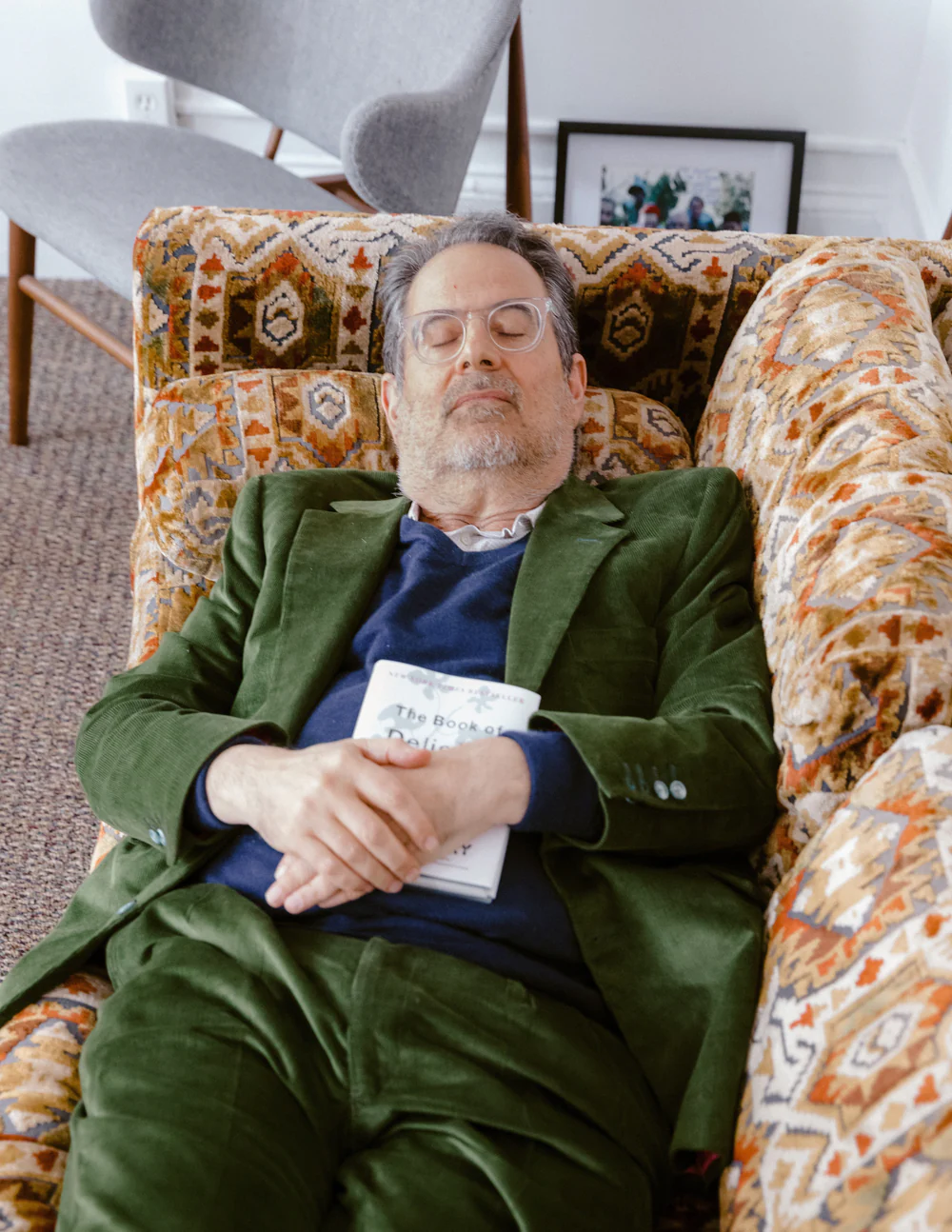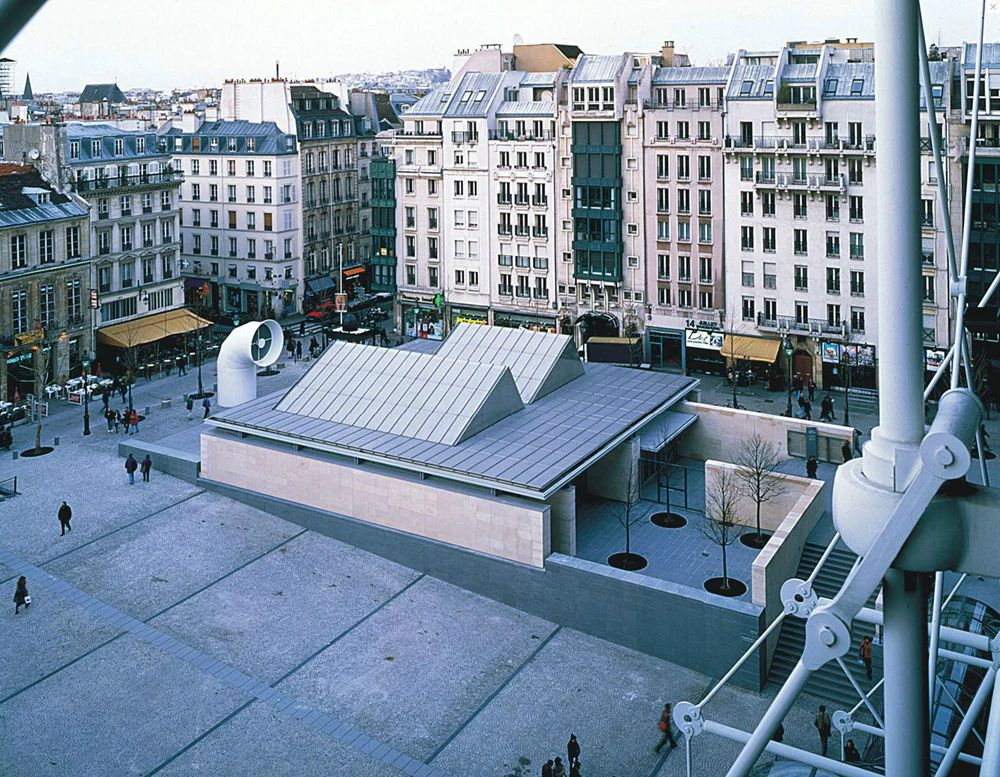Common Thread: In the Studio with Gideon Rubin
By Finlay Renwick
2025년 2월 21일

Text by Michael Hainey, taken from Volume 5 of Common Thread, available for free in-store at our Savile Row and Canal St stores.
There’s a scene in Vertigo that gets to the essence of Hitchcock— Jimmy Stewart, wandering through a museum in San Francisco, sees a woman, from behind (Kim Novak), taking in a portrait of another woman. He can’t see Novak’s face. Only the back of her head, and her blonde, up-swept hair that curls into itself, ending in what can only be called a void.

It might be one of the most haunting moments in film, and it’s no surprise it comes from Hitchcock. Throughout his career the Englishman often played with the tension that came from not revealing a woman’s face to the viewer and instead making us long for her to turn around, to reveal herself and in doing so her emotions.
Hitchcock’s genius was knowing that by withholding her identity and giving us just enough details, we the viewer would project so much onto the woman. We would create our own narrative, our own fantasy. We’d fill in the blanks and see what we want to see.

Gideon Rubin might just be the one artist working today who understands that same tension and how to deploy it to make voyeurs, seducers, and fantasisers of all of us. His paintings of women, most often seen behind, with faces devoid of any features—and often drawn from photo shoots from European magazines from the 1970s and 80s such as Hello!— become a kind of psycho-sexual Rorshach test. We see who we want to see; and fill in what we want to fill in. The effect on the viewer can be hypnotic and disorienting and thrilling.


Absence, as Rubin knows, is more haunting than presence (and in his hands, perhaps even more so). Yet Rubin would be the first to tell you he’s also looking to achieve something more ambitious with his style of painting.
“By erasing images, by taking away details that make something definitive, I think the subject and the painting become eternal,” Rubin tells me as we stand in the Ryan Lee Gallery in New York’s Chelsea neighborhood one chilly autumn evening, the walls filled with new works from Rubin that are about to be shown to the public for the first time in only a few hours. Yet such is the demand for Rubin’s work that many of the pieces on the walls already sport a small red dot beside them, denoting that they have been snapped up by collectors well before opening night.
Rubin shakes his head.
He still doesn’t take moments such as this for granted.

Born in Tel Aviv, the 51 year-old Rubin lives and works in London, but his path to becoming an artist was winding. A humble, bespectacled, soft-spoken man, he is the son of a curator and the grandson of a painter, who tells me, “I came to art late. It was in my DNA. And I grew up in a house surrounded by art and especially my grandfather’s work, but for most of my early life, I rebelled against exploring art.”
The breakthrough came when he was 22. “It was pure chance,” he says. “And total destiny. All at the same time.”

Still living in Israel, Rubin was on a break from his compulsory military service, backpacking across South America with some friends when, as he recounts it, he “took some sort of peyote” in Ecuador.
“I remember having the feeling afterward that there’s more than the eye can see.”
A few weeks later in Bolivia, one of the women he was traveling with was working on some watercolors. Intrigued, Rubin picked up one of her brushes. That’s when everything changed. “I can’t fully describe the sensation, even now. But it felt like this is what I am supposed to do. There was that spark that I’d never felt. And I wanted to keep feeling it.”

He soon relocated to New York City to study at the School of Visual Arts, and later migrated to London and the Slade School of Fine Art in the early 2000s and after a decade or so landed on his style of figurative painting, which begins with archival photographs, some gathered from magazines, some scrounged from decades-old family photo albums he scavenges at flea markets, and some from out of print books.
“The older the material is, the better. And when I handle the images, I often feel a connection to some unearthed truth, some forgotten narrative. It’s the story in each image that pulls me to it, attracts me. But I think what I’m really after is to try to stop time. To freeze the past and bring it into the present. To make it feel like it is an eternal moment. It’s what I first felt when I looked at paintings by Velasquez or Goya or other Old Masters—these works were centuries old, yet they had a power to them.”
Rubin’s success comes, like Hitchcock, by encouraging us to form our own story, create our own narrative. Are we merely looking at a painting, or are we seeing a memory, a fragment, from our unconscious?
I tell Rubin how, when I first came across one of his paintings of the back of a young woman’s head, her hair pulled up into a loose knot, I was transported to a hot summer afternoon in Paris when I sat at a café killing time between fashion shows, drinking glasses of rosé with a colleague. At one point, I saw a woman across the room, sitting with her back to me, pull her hair into a loose knot. It was the briefest of moments. But something about her gesture and her hair and the afternoon light and yes, the rosé—all of it held me entranced. It created for me what seemed like a forever moment. It was a split second and a sight that I had always remembered, yet felt could never be re-captured. Until I saw one of Rubin’s paintings.

As I tell him this story while we stand in the gallery, he gives a knowing, kind smile. As though I’m not the first fan of his work to share such a breakthrough with him.
“I’d like to think the images and the figures in my paintings don’t make you see something specific, but instead they evoke memories, or remind the viewer of a certain person. Maybe both.”
He looks around the room, at the walls filled with such images. I follow his gaze, wondering what he’s thinking. Just then, a gallerina taps him on the shoulder. “The doors will be opening soon,” she says. “Maybe you want to prepare?”
“I should go,” Rubin says.
As he walks away, I watch the back of his head.
But he does not turn around.










